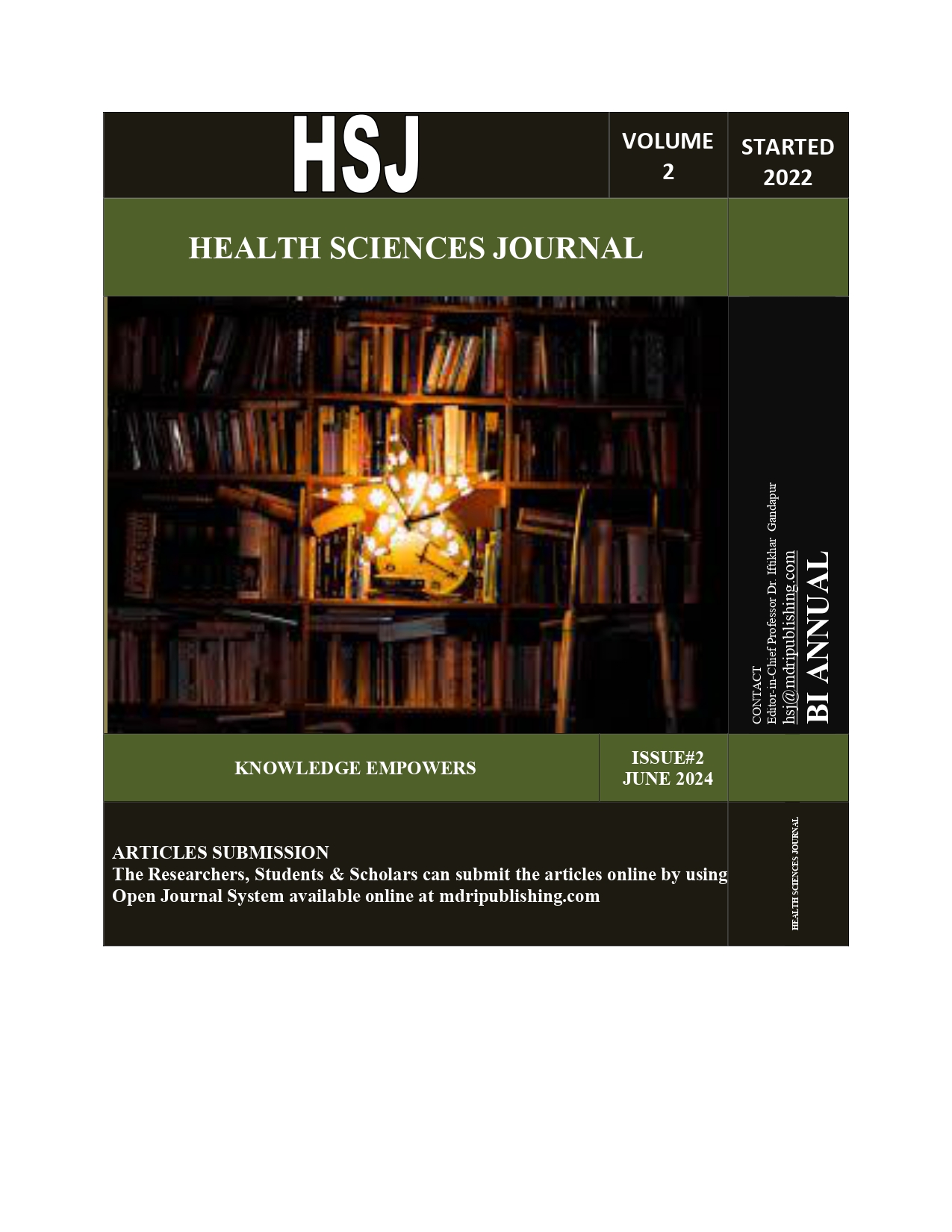BIOACTIVE COMPOUNDS AND ANTIRADICAL CAPACITIES OF DIVERSE EXTRACTS OF OLEA EUROPAEA L. LEAVES FROM PAKISTAN
DOI:
https://doi.org/10.59365/hsj.2(2).2024.90Keywords:
Olive leaves, bioactive compounds, antioxidant capacities, DPPH, RPAAbstract
Background: There has been an increase in interest in studies for the extraction of biologically active compounds from natural sources during the past decade. The Oleaeuropaea L. tree, occasionally referred to as the olive, is one of the members of the Oleaceae family and is very significant historically and economically, particularly in Mediterranean countries. Olive leaves have a lofty phenolic compound, which offer them antioxidant properties and a decreased risk of illness. Aims: The aim of this study was to determine the bioactive compounds (polyphenol, flavonoids) and antioxidant activities of the different olive leaves extracts.
Methods: The percentage yield of various extract of olive leaves was measured and the polyphenols was determined by Folin Ciocalteu reagent while the bioactive compounds flavonoids was estimated by using aluminum chloride method. The antioxidant activities of various extract of olive leaves were measured by DPPH and reducing power assay. Results: In this study the olive leaves extracts' maximum recovery yield (32.70%) of was found in methanol extracts and the total phenol concentrations varied from 3.64±0.11–135.70±8.2 (mg GAE/g) and flavonoids 1.20±0.07 26.35±1.20 (mg QE/g). Our results revealed that methanolic extract shown outstanding % Inhibition (DPPH) and reducing power activity. The capacity to lower the DPPH was in this order: methanol > water: methanol>water>chloroform > hexane extract at the same concentration. Similarly, methanolic extract, showed higher reducing power activity with absorbance which increases from 0.5701 to 1.0204 at concentration 0.1-0.5 mg/mL. Conclusions: This concluded that the olive leaves were a potent source of bioactive compounds and its ability to scavenge free radicals and its reducing power is largely attributed to their phenolic compounds. However, more in-depth research is needed to identify the active compounds in these extracts that are responsible for these effects.





